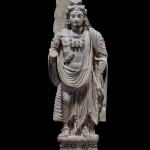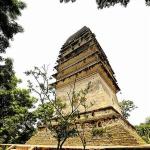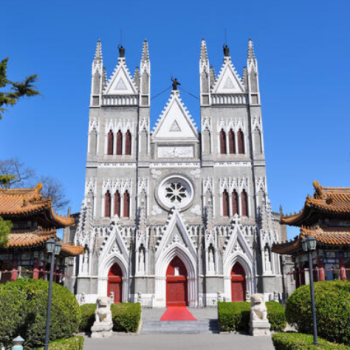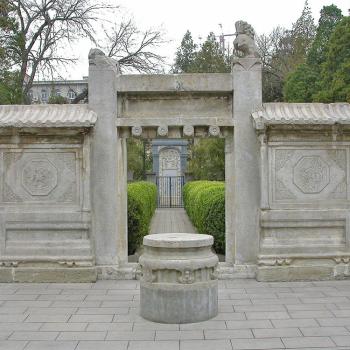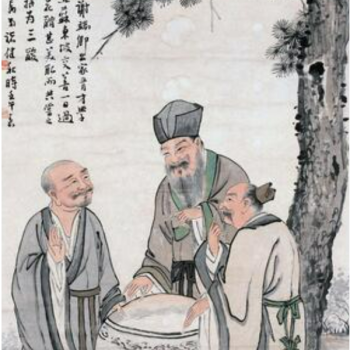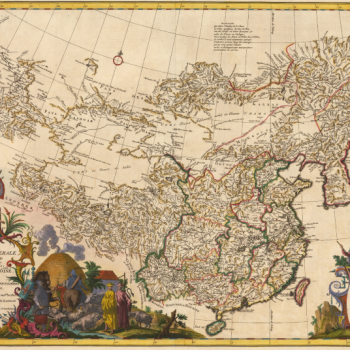By the time that Zhu Yuanzhang rode to the imperial throne on the back of Maitreyan prophecy in the fourteenth century, the Chinese apocalyptic narrative had been relatively stable and established for over a thousand years. As we have seen, various figures—Li Hong, Prince Moonlight, Maitreya—fulfilled the role of messiah in that narrative. But the role that the messiah was expected to play in the grand scheme of things remained mostly constant. It was an important and long-lasting component of the apocalyptic story. It was not the only such component, however, as China’s eschatological master narrative contained many elements that were just as ancient as the messiah concept and just as central to the development of Chinese end-times thought.
One of these was the concept of the “seed people,” a concept derived ultimately from Taoism. This refers to the elect, the small number of true believers in the general population who will escape the calamities of the current age and enjoy the glories of the world to come. These are the true believers who have been mindful of the coming end and justified themselves through their unwavering faith. They shall be saved while all others suffer the final calamities in this life and eternal punishment afterward. Importantly, being a part of this select group had little to do with where one fell in the state-sponsored religious hierarchy. As Daniel Overmyer observes in Precious Volumes, “the fundamental criterion for attaining rebirth in the new world of the elect is lay piety based on observance of the five precepts and recitation of scripture. Monks can also be saved, but most discussions of them criticize their lack of piety and their involvement in secular affairs” (Overmyer 23). The “seed people” are just as likely—indeed, generally more likely—to be ordinary persons rather than ordained and consecrated members of the religious establishment; women were also sometimes included on a near-equal basis. This incipient egalitarianism, with its corresponding distrust of official religious authorities, would more fully blossom during the Ming and Qing periods. Also of note was the belief that a number of spiritual worthies were already present amongst the populace, secretly preparing the world for the messiah’s advent.
Then there is the concept of a heavenly city—called variously the “Magical City” (Huacheng), “Willow City” (Liucheng), “Cloud City” (Yuncheng), “Golden City” (Jincheng), or “Silver City” (Yincheng)—which descends from above in the final days and serves as a refuge for the “seed people.” It was an extension of the saving work of the messiah and its appearance was just as important as was his own. Thus, for instance, Wang Huaigu’s eighth-century prophecy foretelling the coming of the new Buddha and the restoration of the Han Dynasty—discussed in a previous entry—also included the detail that, “This year black snow will fall everywhere and in Beizhou the Silver City will appear” (qtd. in Seiwert 122). Though called by various names, this city, like the messiah-figure himself, always had the same function; to provide hope and salvation for the true believers as the rest of the world burns.
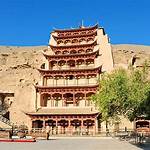
The world’s destruction shall consist not just of the usual cosmic calamities of earthquake, flood, fire, and famine, but also of the invasion of China by a barbarian people from the north with the peculiar and evocative name of the “Old Moon” (Guyue). This strange invading force, often accompanied by hordes of demons, shall ravish China, leave its great civilization in ruins, and impose their rule upon it for a time. But then, as devastation and depredation reach their peak, the messiah shall appear. Then shall come a final great battle, with the Old Moon and their demonic allies on one side and the forces of the manifest savior on the other. Good shall vanquish evil, the world shall end in fire, and then there shall come a final judgment during which the savior separates out the good and faithful. The “seed people” shall be vindicated while the wicked and unbelieving will all be condemned. The evildoers will be cast into eternal suffering, while the righteous shall live forever in an idyllic new world ruled over by the savior.
This is the basic narrative of Chinese popular eschatology. It appears to have been largely complete by the sixth century, when the Zhengming jing described it in abundant and precise detail. That work, in Erik Zürcher’s words, “contains an appalling description of the cosmic disasters, the apocalyptic battle, Maitreya’s descent, the separation and salvation of the true believers, and the recreation of the world into an ideal form” (Zürcher 35). All the important elements are there, held together in a coherent structure, showing that its view of the end-times had already become standard by this time —no small feat given that China is a large country and apocalyptic ideas usually had to spread without government or elite literary support. Zürcher observes that this same narrative also appears in purely Taoist apocalyptic texts, indicating that it almost surely predated Buddhism, which just gave a new overlay to what was already an ancient tradition. In some sense, that Buddhist overlay was the finishing touch, for once Maitreya was given the messiah role and the final calamities made to accord with traditional descriptions of disasters at the end of a kalpa, there would be no more major changes in the story for roughly a thousand years.
It is hard not to notice the striking parallels between the Chinese end-times narrative and that of Christianity. The concept of the “seed people” echoes Christian ideas of the “saving remnant” and of those who bear the seal of God in the Book of Revelation, the small body of the elect who shall be protected from the horrors of the end-times. When one hears of the heavenly city descending at the end of the world, one cannot help but think of the New Jerusalem descending from Heaven in the Revelation’s closing chapters. Indeed, the Shouluo jing and the Zhengming jing have the “seed people” being taken up into the air to enter the city in the heavens before the calamities begin, predating and anticipating the idea of the Rapture by well over a thousand years. The Zhengming jing‘s description of the new world as one in which “even the city-wards are adorned with luminous jewels, so that there is no more difference between day and night” (qtd. in Overmyer 20), feels like a particularly close parallel to Revelation’s description of the New Jerusalem, where “[t]he foundations of the city wall were adorned with precious stones of every kind” (Rev. 21:19) and “[t]he city did not need the sun or the moon to shine on it … nor will there be any night there” (Rev. 21:23-25). Furthermore, the heavenly city is anchored by the continual presence of Maitreya, who descends to sit in it much as God and Christ descend to dwell at the center of the New Jerusalem.
As for the forces of the Old Moon, they bear a particularly strong resemblance to Gog and Magog. Both are northern barbarians who will lay waste to the world at the end of time. Both shall bring about the final tribulation of the true believers and both shall be destroyed in the final military action of history. In that last great moment of conflict, they shall be swiftly and suddenly destroyed by Heaven in an ultimate show of divine force. Finally, when we zoom out from the specifics to look at the climax of the narrative as a whole, we must admit how much it looks like that of Christianity. There is the descent of the savior from heaven and the final great battle in which he and his hosts obliterate the forces of evil. Then, after this world has ceased to be, there comes a Final Judgment separating the faithful and unfaithful for all eternity. The Zhengming jing describes how “[t]hose with karmic affinity (yu-yuan jen) will be east of the river and those without such karmic destiny will be on the west” (qtd. in Overmyer 18). The savior acts as judge; those loyal to him and his message find salvation while those who opposed him and ignored his teachings are cast into hells of torment. This all aligns almost exactly with the Christian apocalyptic story.
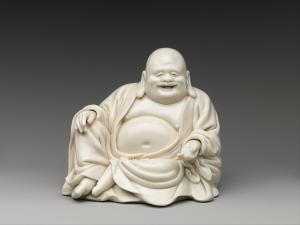
But while these stories have so much in common, this cannot be the result of direct influence. The Zhengming jing was composed in the century before Christianity made its first entry into China. Even when it did arrive, Christianity’s influence on Chinese culture until the 19th and 20th centuries was minimal. In addition, while older scholars were quick to attribute these similarities to the influence of Manichaeism—a faith that was influenced by Christianity and had a more sustained presence in China—more recent scholars cast doubt on the idea that Manichaeism had much of a role to play in the formation of Chinese apocalyptic thought. We must instead conclude that this is a case of parallel evolution. Whether this points to some higher significance or simply suggests that the inherent psychology of apocalyptic movements—as Christianity was in its early years—predisposes them to certain ideas and symbols, the reader may decide for themselves.
That said, it seems certain that the stability of this apocalyptic narrative and its similarity to Christianity’s own helped the Christian faith finally gain ground in China in the late few centuries. As noted, that narrative was flexible enough that is required only superficial modifications to be palatable to different religious traditions. And it tended to attach itself to anything that gained a level of cultural prominence in China. For instance, Zhuge Liang’s supposed prophetic text, the Maqian ke—covered more fully in a previous entry—wove the sage of Shu-Han into the standard apocalyptic story by having him predict a time when “the Old Moon reigns supreme.” (Zhuge 46). Thus, Christianity’s distinctive symbols and personalities would simply provide yet another gloss on the well-establish end-times story, a process helped along by how similar its own apocalyptic accounts already were to that story. The Taiping rebellion may have promoted a bizarre brand of Christianity but it also drew upon traditional Chinese eschatology, as its cooption of the ages-old millennian term taiping amply demonstrates. Likewise, in modern China, while apocalypticism is mostly the preserve of Christian sects, these sects continue to draw upon the vision of the final end that originated in their country long before Christianity itself ever arrived.
Works Cited
Overmyer, Daniel L. Precious Volumes: An Introduction to Chinese Sectarian Scriptures from the Sixteenth and Seventeenth Centuries. Cambridge: Harvard University Press, 1999.
The Revelation of John. The Oxford Study Bible, edited by M. Jack Suggs, Katharin Doob Sakenfeld, and James R. Meuller. New York: Oxford University Press, 1992. pp. 1556-1575.
Seiwert, Hubert. Popular Religious Movements and Heterodox Sects in Chinese History. Leiden: Brill, 2003.
Zhuge Liang. Maqian ke. Ver. 4. Edited by Steve Moore. August 2012. Translation mine.
Zürcher, Erik. “‘Prince Moonlight’: Messianism and Eschatology in Early Medieval Chinese Buddhism.” T’oung Pao, vol. 68, no. 1-3 (1982): 1-75.

